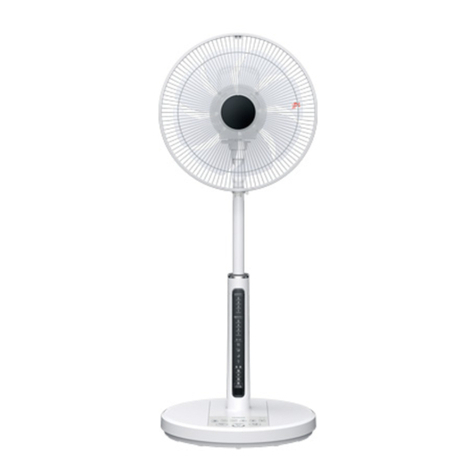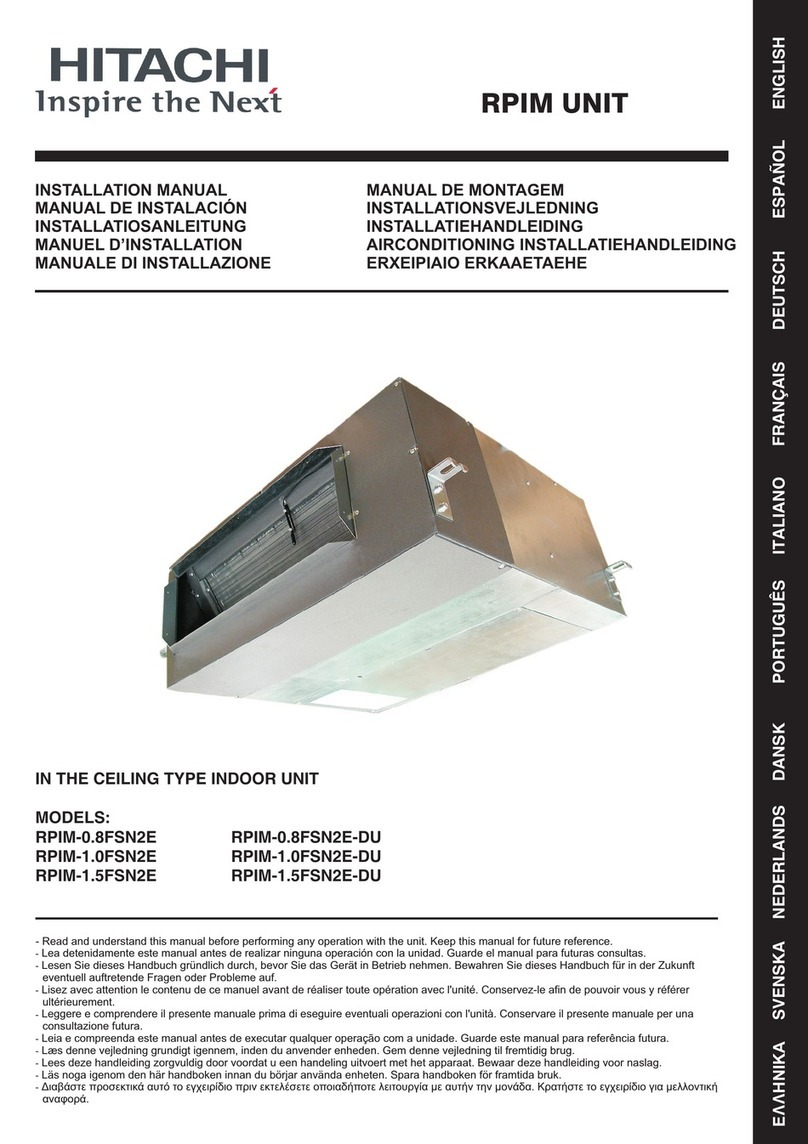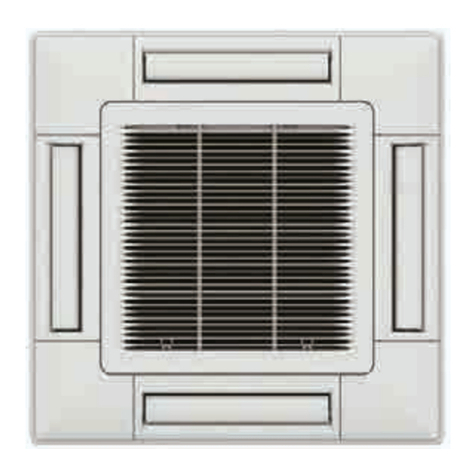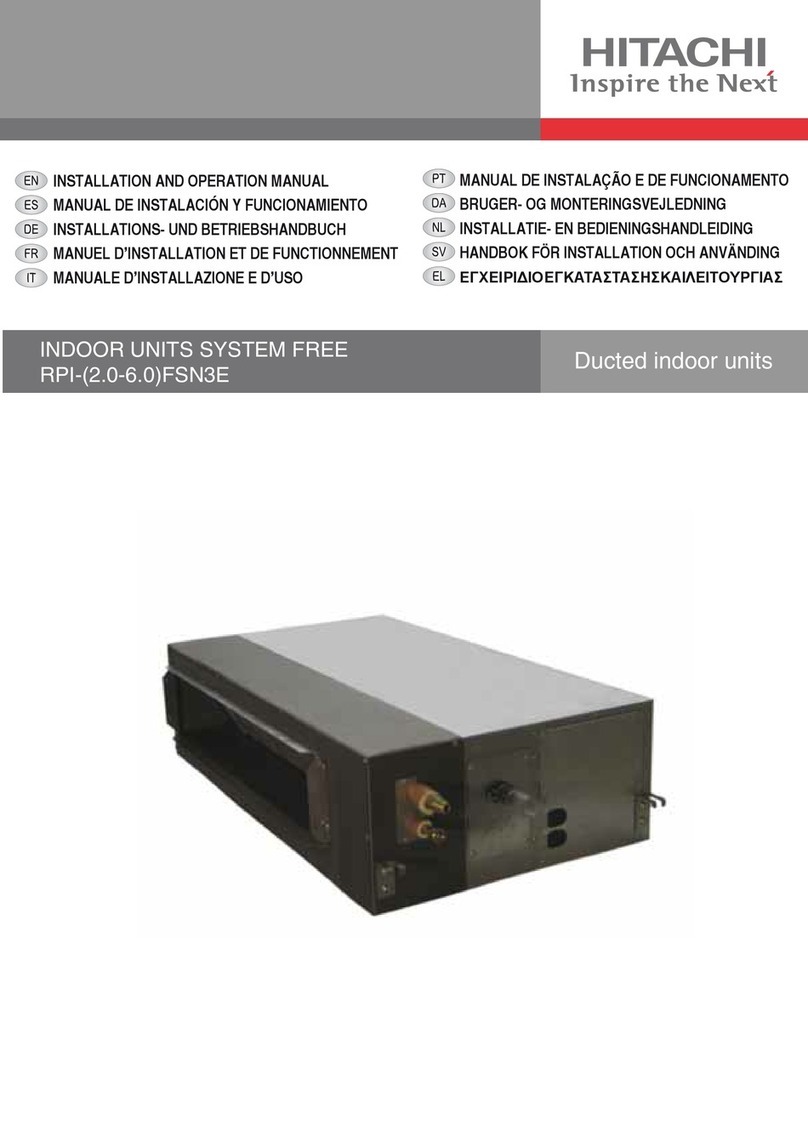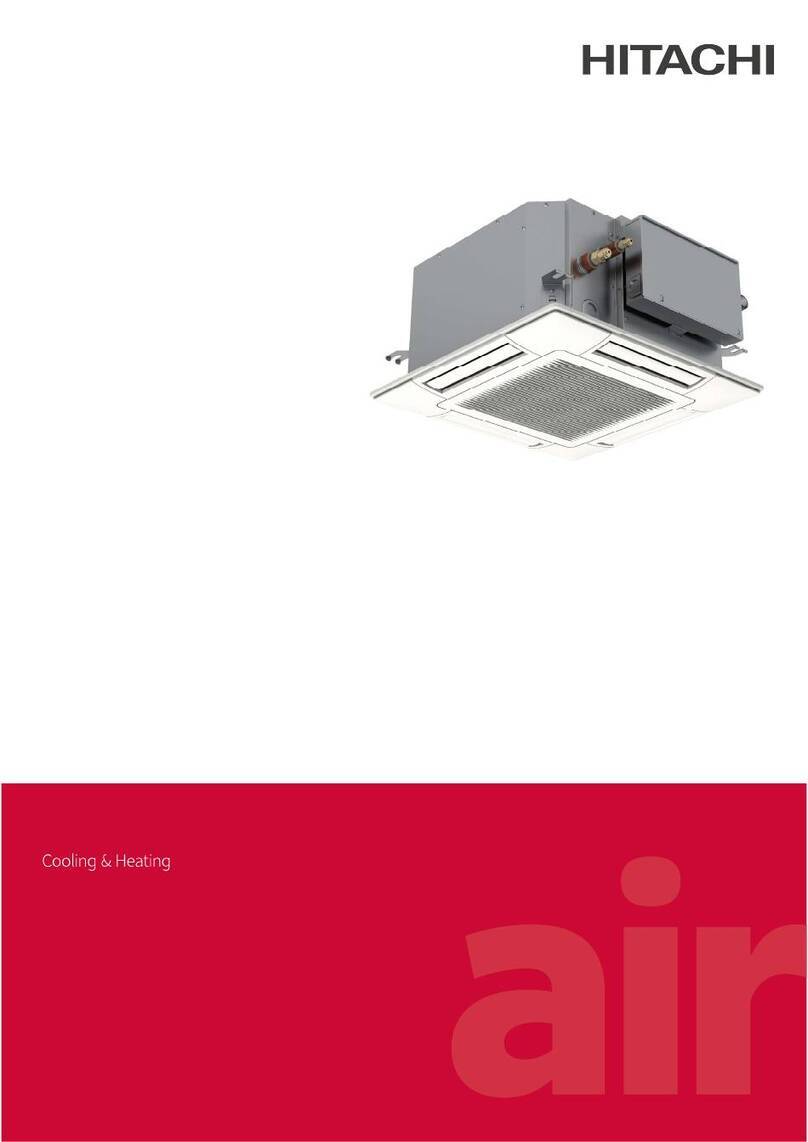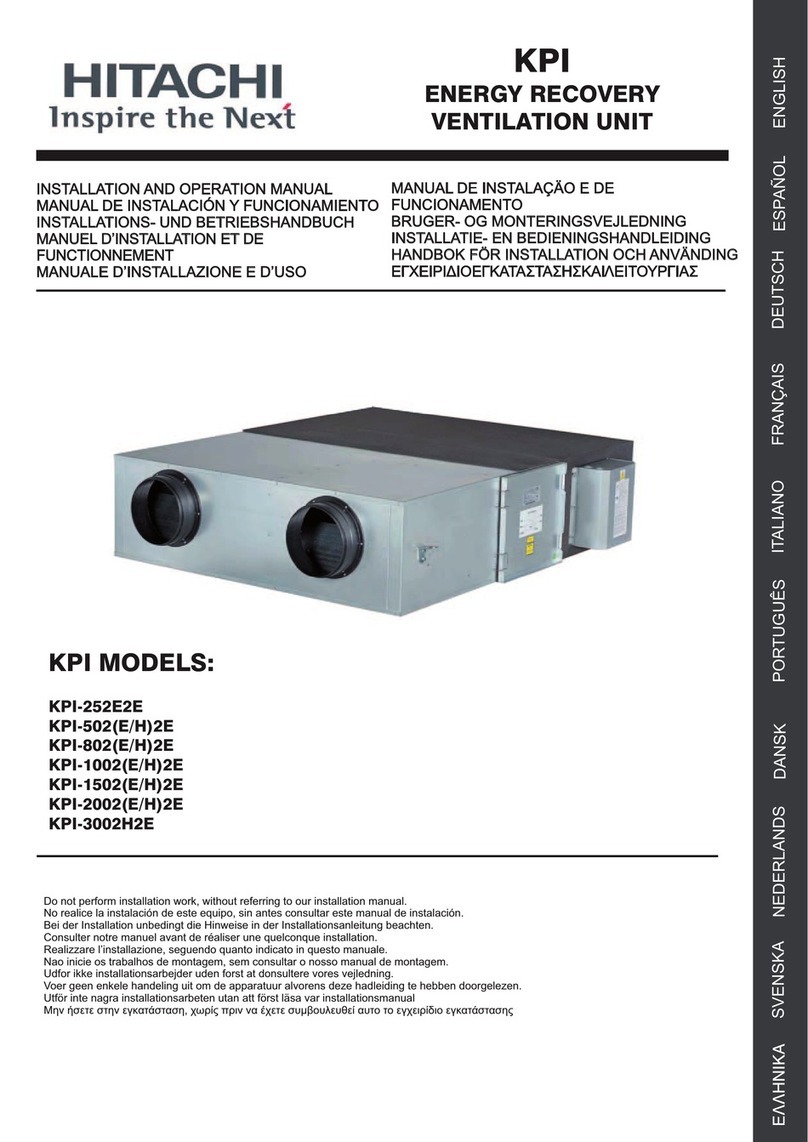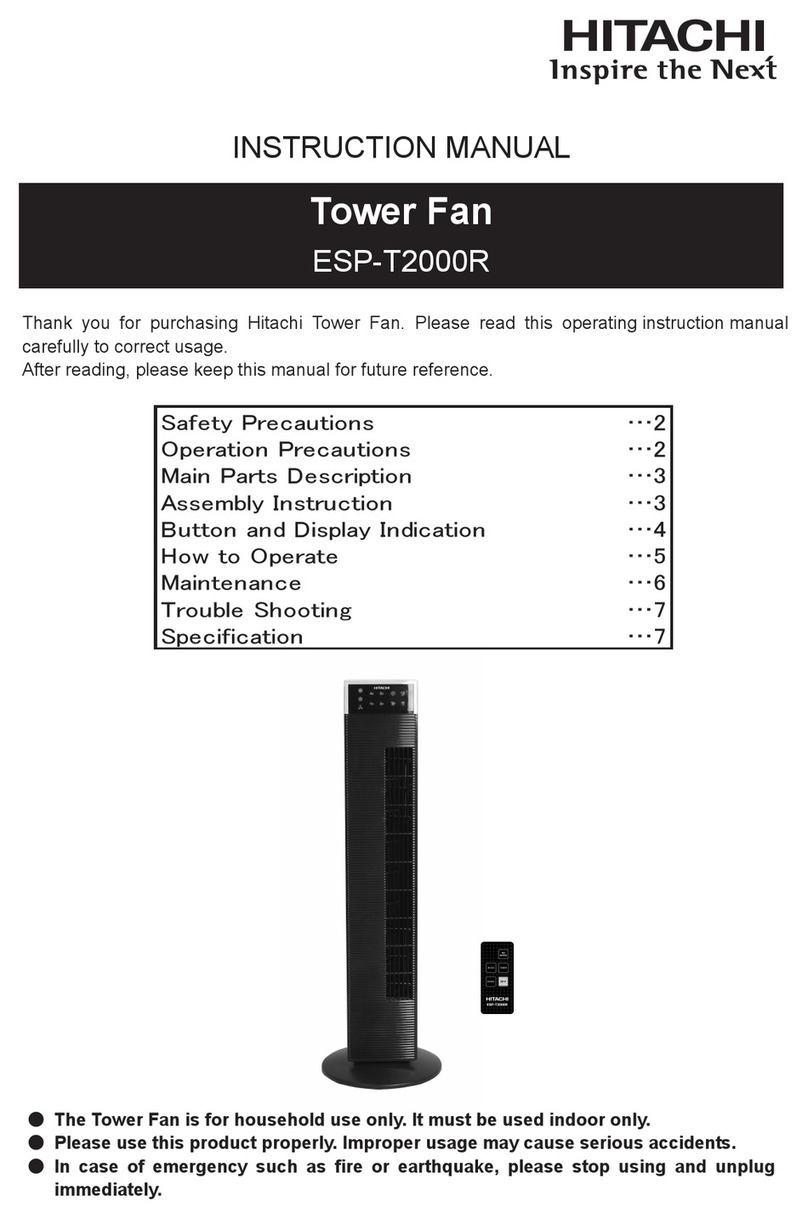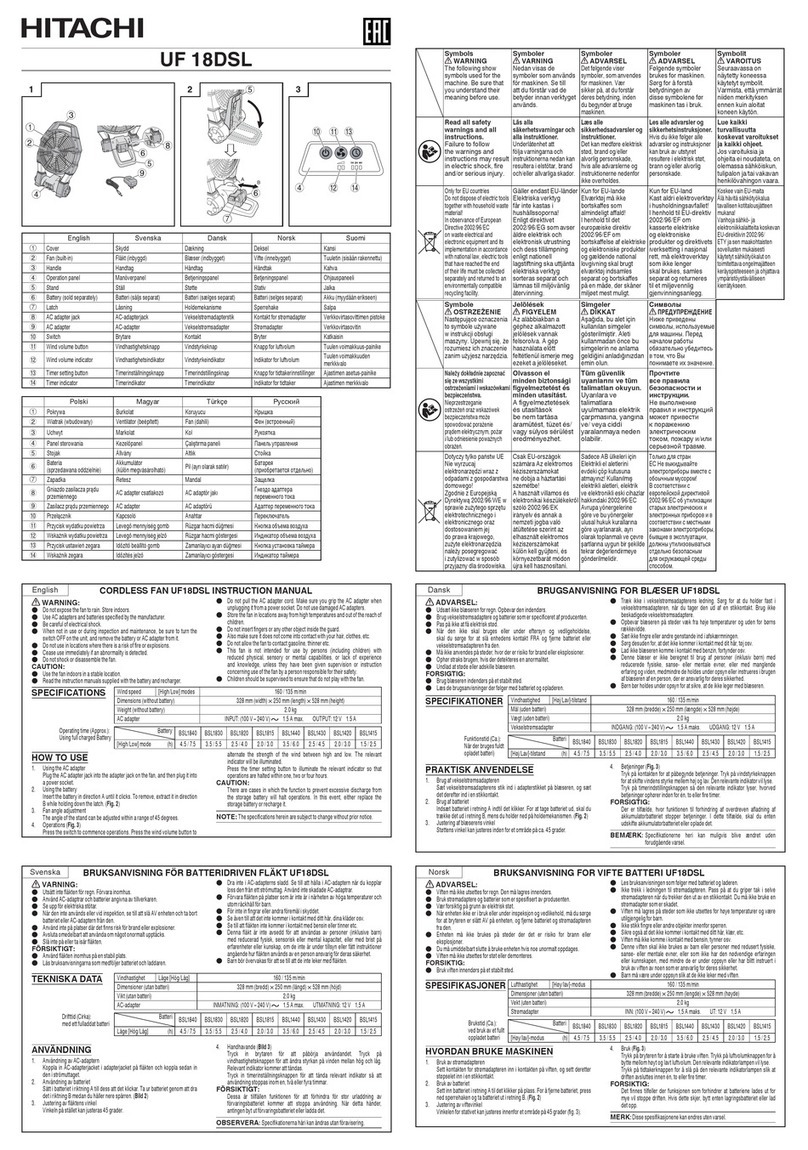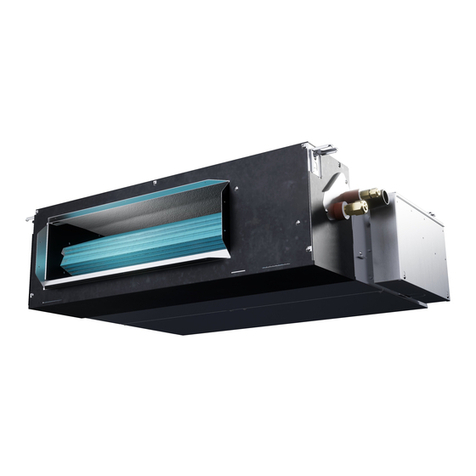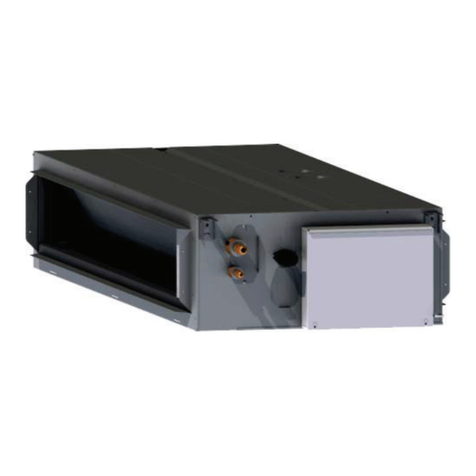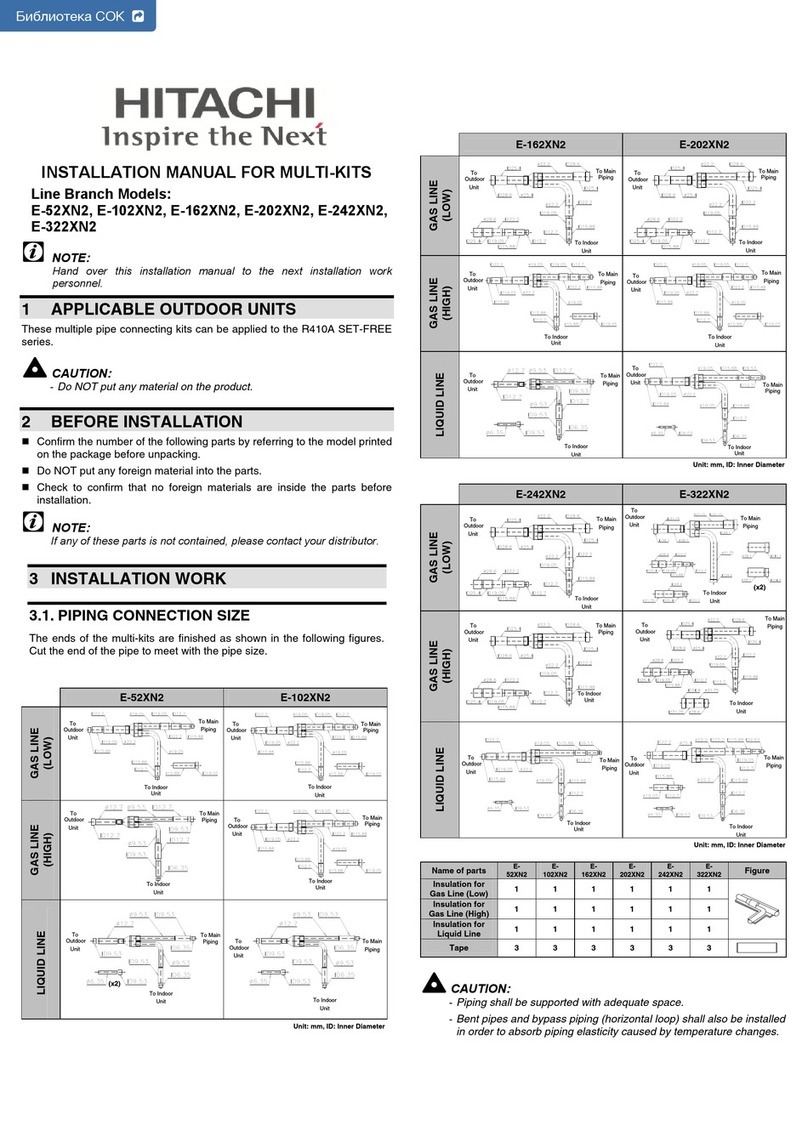
-vii-
• Anti-static precautions is necessary for installing and maintenance, for example, wear pure cotton
clothes and gloves.
• If R32 refrigerant leakage occurs during the installation, operators shall immediately detect the
concentration in indoor environment until it reaches a safe level. If the leakage aects the performance
of the machine, please immediately stop the operation, and the air conditioner must be vacuumed
rstly and be returned to the maintenance station for processing.
• Where electrical components are being changed, they shall be t for the purpose and to the correct
specication. At all times the maintenance and service guidelines of this manual shall be followed. If in
doubt, consult the manufacturer’s technical department for assistance. The following checks shall be
applied to installations using R32:
○The refrigerant charge is in accordance with the room size within which the refrigerant containing
parts are installed.
○The ventilation machinery and inlets and outlets are operating adequately and are not obstructed;
and shall keep away from heat source, inflammable or explosive conditions.
○Marking to the equipment continues to be visible and legible. Markings and signs that are illegible
shall be corrected.
○Refrigerating pipe or components are installed in a position where they are unlikely to be exposed
to any substance which can corrode refrigerant containing components, unless the components are
constructed of materials which are inherently resistant to being corroded or are suitably protected
against being so corroded.
• Repair and maintenance to electrical components shall include initial safety checks and component
inspection procedures. If a fault exists that could compromise safety, then no electrical supply shall be
connected to the circuit until it is satisfactorily dealt with. If the fault cannot be corrected immediately
but it is necessary to continue operation, an adequate temporary solution shall be used. This shall be
reported to the owner of the equipment so all parties are advised. Initial safety checks shall include:
○that capacitors are discharged: this shall be done in a safe manner to avoid possibility of sparking.
○that no live electrical components and wiring are exposed while charging, recovering or purging the
system.
○that there is continuity of earth bonding.
• Sealed electrical components shall not be repaired.
• Check that cabling will not be subject to wear, corrosion, excessive pressure, vibration, sharp edges or
any other adverse environmental eects. The check shall also take into account the eects of aging or
continual vibration from sources such as compressors or fans.
• Under no circumstances shall potential sources of ignition be used in the searching for or detection of
refrigerant leaks. A halide torch (or any other detector using a naked ame) shall not be used.
• Air-tightness test shall be carried out as guaranteed. Charging oxygen, acetylene or other inammable
and toxic gases during leakage inspection and air-tightness test may lead to explosions. It recommended
to use nitrogen gas for this test.
• The following leak detection methods are deemed acceptable for all refrigerant systems.
○Electronic leak detectors may be used to detect refrigerant leaks but, in the case of flammable
refrigerants, the sensitivity can be inadequate, or can need re-calibration. (Detection equipment shall
be calibrated in a refrigerant-free area.) Ensure that the detector is not a potential source of ignition
and is suitable for the refrigerant used. Leak detection equipment shall be set at a percentage of
the LFL of the refrigerant and shall be calibrated to the refrigerant employed, and the appropriate
percentage of gas (no more than 25 %) is confirmed.
○The fluid used in leak detection is applicable to most refrigerants. But do not use chloride solvents to
prevent the reaction between chlorine and refrigerants and the corrosion of copper pipeline.
○If a leak is suspected, all naked flames shall be removed/extinguished.
